Trucks of the First World War. USA
The design of the car was very simple. The front and rear axles were mounted on one transverse spring each. The car had a four-cylinder engine with a displacement of 2,9 l (2893 cm ³) and a two-stage planetary gearbox. In the design of the car were applied such innovations as a separate cylinder head and pedal shifting. The brakes were only on the rear wheels, and at the same time they had both foot and manual drive. The latter also participated in the gear shift. At first there was no starter: the engine had to be started with a handle.
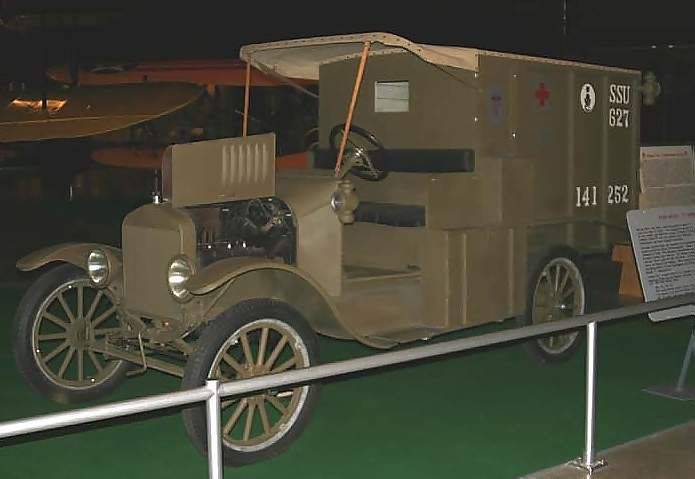
Ford-T is an army ambulance.
It is clear that such a machine could easily be adapted for various needs. It could be a staff car, and a light truck, a light van, a light patrol car, a communication vehicle, and even a motorcycle for traveling on rails. But the most important option for "Tin Lizzy" was the ambulance car. During World War I, even before the United States entered the war, some charitable organizations offered an "emergency model" T for the Allied Command and began its deliveries. At the same time, only the chassis was sent to Europe, and the body was made on the spot, at the Kellner enterprise in Boulogne, near Paris.
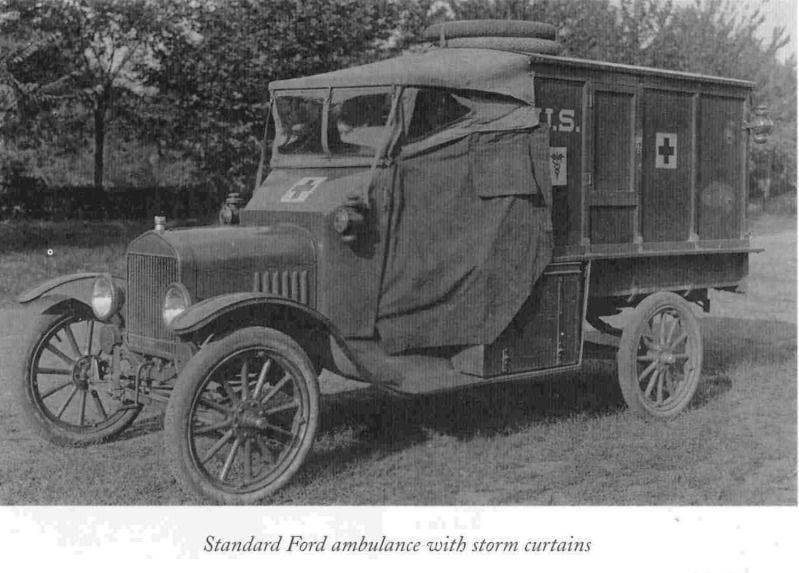
"Ford-T" - ambulance in the field
The ambulance could carry three patients on a stretcher or four sitting, and two more could sit next to the driver. It is in this version of "Tinny Lizzy" in the war has proved itself best. Low weight on the dirty and covered with pits military road made it easy to pull out even two or three soldiers, well, and they met on the front roads constantly. He was also, as already noted, very easy to maintain and repair, so that it could be fixed right on the road without contacting the repair shop. By November 1918, the 4362 of the Ford T cars in the ambulance version were sent from the USA to Europe, where it became the most common car of this type among all used by the allies during the war. Many US Red Cross employees and driver volunteers drove this car, including writer Ernest Hemingway and future multiplier Walter Disney.
At the beginning of the twentieth century, the Mack brothers' company in Brooklyn (New York) with great success switched from making horse drawn carriages to producing gasoline buses. Therefore, even before 1914, this company has earned an excellent international reputation. Well, at the beginning of the First World War, the Mack brothers began to produce trucks for military purposes.
The first model of such a truck went into production in the 1916 year, and for the sake of cheapness, it didn’t even have a windshield! The transmission was reliable, but heavy, with a chain drive of the rear axle. However, it is precisely because of this that the AC car soon earned a reputation as a very reliable car, so many even said that it was capable of performing almost impossible tasks. While other trucks could easily get bogged down in the mud of the French hinterland, this truck was not a hindrance. Well, the truck earned its nickname “Bulldog” in the service in the British army, where more than 2 000 of such trucks were delivered. Apparently, some of the engineers who were testing her said that she looked like a bulldog, and that is how the nickname “bulldog” suited her. Well, in England this nickname was very honorable, as the English loved the bulldogs, so in 1922 the company “Mac” accepted it even as a corporate emblem. Taken as a standard 5-tonnage truck, the Mac was 4470 shipped to France with an American expeditionary force. American soldiers soon confirmed the high quality of this truck. He also delivered in the French army.
Jeffrey Quad was also one of the very popular trucks of the First World War. It was developed by Thomas B. Jeffrey in Kenosha, Wisconsin USA in 1913. It was a 2-ton four-wheel drive vehicle with an 4-cylinder engine and a gearbox that had four speeds ahead and the same back. At the same time he had a steering on all four wheels, which gave him a very small turning radius, which was only 8,5 meters. All wheels had brakes, so at a speed of about 20 miles per hour, its braking distance was equal to the length of its body. The production of the truck began in 1913 year, and the peak of release - 11490 machines fell on the 1918 year. In August, 1916, Charles T. Jeffery (the son of the company's founder), sold it to businessman Charles Nash, who renamed it in his honor, after which the cars also became known as Nash Quad.
Four driving wheels, and besides, all the guided ones made the champion of dirt roads out of this car and are very popular in several armies at once. In the first place it is, of course, in the army and in the US Marine Corps, but was also used by the armed forces of France and Great Britain, where it was used as a general carrier, tow truck and, again, ambulance. In the USA, it became the basis for the creation of an armored car, and in Russia, where these trucks were also delivered, the Jeffrey-Poplavko BA was built on its basis.
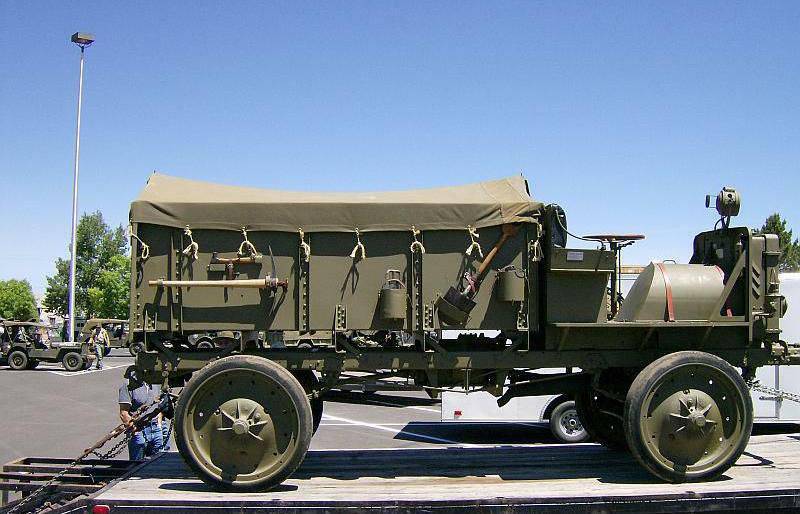
"Nash Quad", who survived to our time.
The French army also used it as a vehicle, but instead of towing the famous 75-mm cannon of the 1897 model of the year, Jeffrey-Quad drove it in his body using special ramps for loading. The reason for this decision was the idea that the wooden wheels of this gun are not suitable for high-speed towing, and that a four-wheel drive car would be able to pull this tool easier than to tow it in the traditional way. This improvisation increased the mobility of the French artillery, but did not eventually take root, although the end of the war in the French army was formed as much as an 33 regiment of such artillery transporters.
Garford Motor Truck Company, founded in 1910 by entrepreneur Arthur Garford in Elyria, Ohio (a few kilometers from Cleveland), initially produced cars, 1-ton pick-ups and 2, 3 and 5 trucks, as well as dump trucks based on the latter. The cars were equipped with engines of their own production, and the 3- and 5-ton trucks were located under the driver’s cab, which were thus bonded. In 1912, the company commissioned an order for a batch of trucks for the needs of the US Postal Service, and with the start of World War I began to supply trucks for the army. The army mainly purchased passenger cars and ambulances, 1-ton pickups and 5-ton trucks and dump trucks. In 1915, the Russian procurement commission of General Sekretev purchased several dozen “Harford” 5-tonne chassis for the Russian imperial army, where the “Harford Putilov” powerful cannon armored vehicles were made based on them.
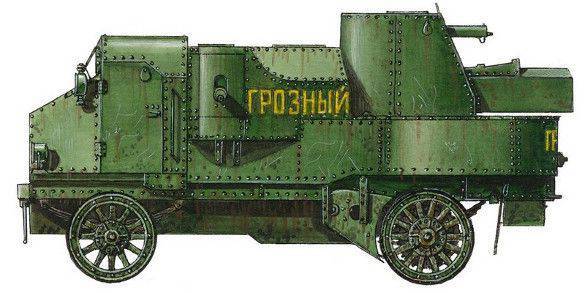
Armored car "Garford Putilov." Fig. A. Shepsa.
In 1918, Garford, in conjunction with Holt, developed and built the first American 3-ton truck with a semi-tracked undercarriage. In the same year, 978 standardized army trucks "Liberty" were assembled at the plant's facilities.
In July, the US Army, which required a reliable staff vehicle, 1917, after extensive tests at the border with Mexico, selected the “Cadillac” Type 55 “Touring” model. During World War I, 2350 vehicles were supplied by officers of the American expeditionary forces in France. These were cars with a powerful engine in 70 l. pp., which allowed them to develop a decent speed, and indeed they were distinguished by their high quality.
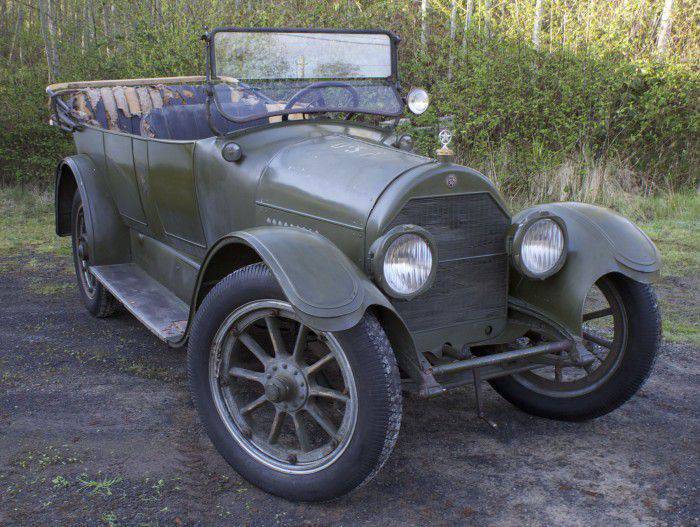
"Cadillac" - headquarters vehicle "type 57" model 1918 year.
At the end of 1914 - the beginning of 1915, the problem of towing heavy guns was very acute in the English army and there was an acute shortage of tractors needed for this. And the first standard tractor of this destination was the American agricultural farm tractor Holt with a gasoline engine and wide tracks.
The company was founded by Benjamin Holt, who at the end of the nineteenth century introduced his first steam tractor. In the 1892 year, he founded his own production company, and between 1890 and 1904 of the year, Holt had already launched about 130 steam tractors. After successfully testing his tractors in 1904 - the beginning of 1905 of the year, Holt focused his efforts on tracked tractors with gasoline engines and excelled in this. The Holt brand became a trademark in 1910.
The first tracked tractors of his company came to Europe back in 1912, after which Holt opened offices in many European countries. Shortly after the war began, the Royal Artillery selected a Holt tractor with an 75 horsepower engine. as the main means of towing heavy tools. However, the first deliveries of the ordered machines were made only in January 1915. The tractors were tested at Aldershot and immediately sent to France, where they became the main vehicle of the British army, and were engaged in transporting such tools as the 6, 8 and 9,2-inch howitzers.
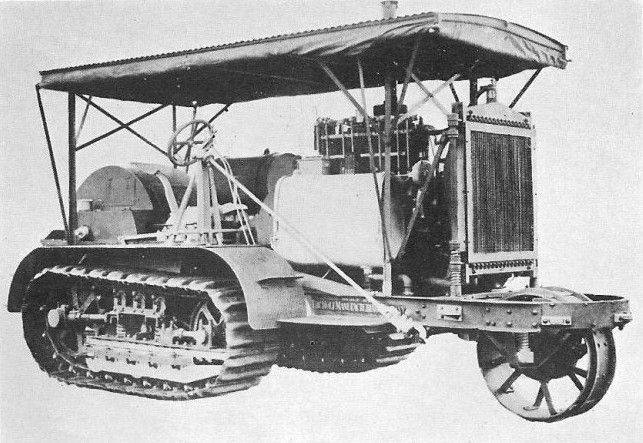
Tractor "Holt".
The tractor had a weight of about 15 tons and a top speed of only 3 km / h during towing and 8 km / h without load. Steering was carried out by blocking one of the tracks in the direction of rotation and turn the steering wheel. In general, the "Holt" did not have a very good cross, but all the first tanks of England and France owe their birth to him. Looking at this tractor, Colonel E. D. Swinton, who was in France at that time, invented his “armored machine gun carrier”, well, and then it was on its basis that the first French tank, SA1, made by Schneider, was created.
Two Holt armored chassis were also tested in the United States as tanks, but did not satisfy the Americans and remained in stories experienced samples. As for the British army, there Holt tractors remained in service as artillery towers until the twenties. In the 1918, they were also used to carry 3-inch anti-aircraft guns. In Mesopotamia, they were used along with tracked trailers to transport cargo through the desert. Tractors "Holt" even served in the Austro-Hungarian army, and produced them under license at a factory in Budapest.
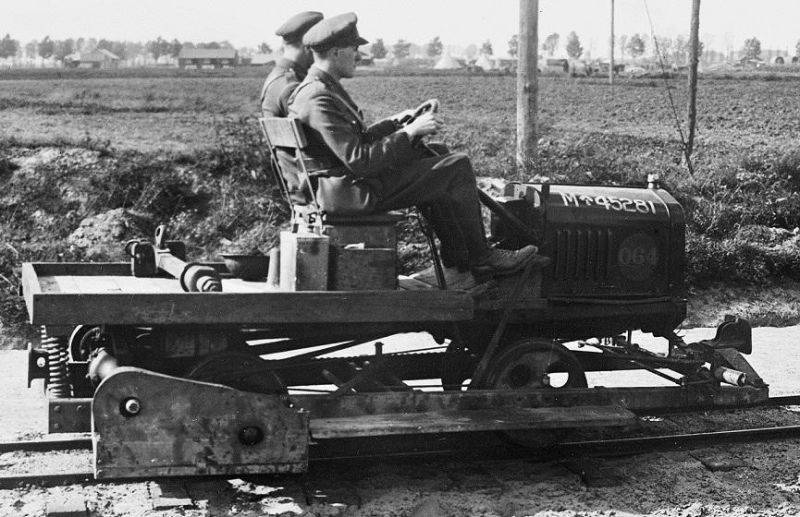
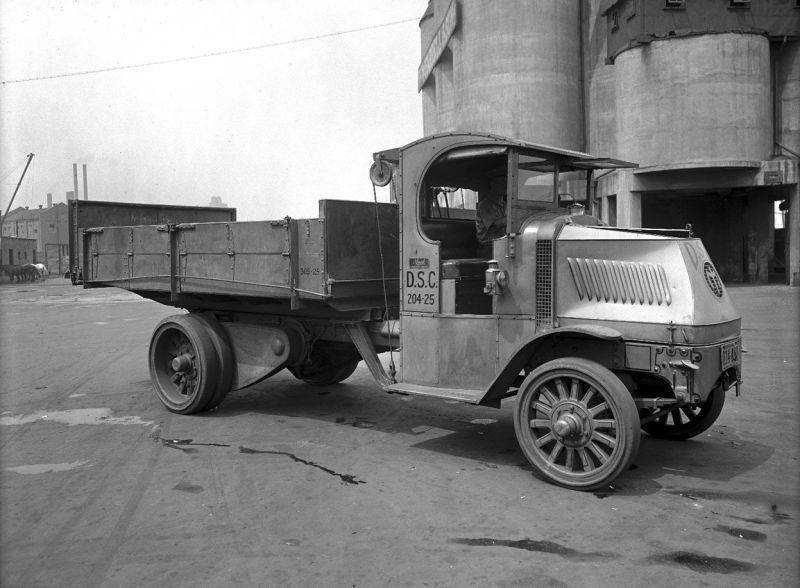
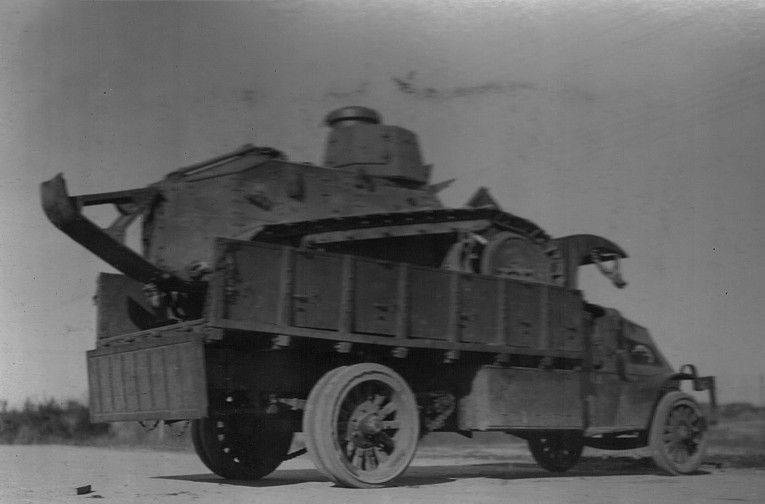
Information